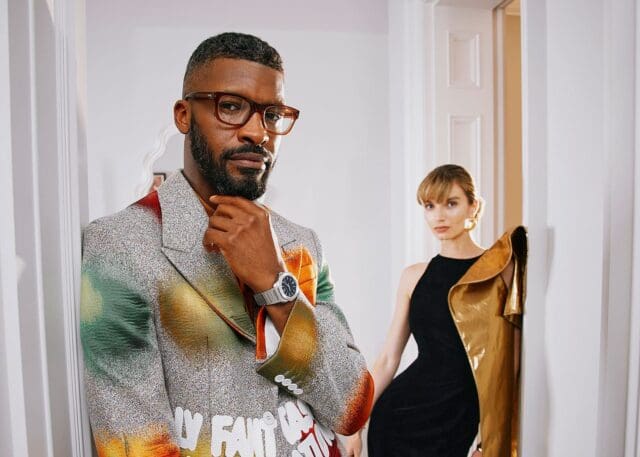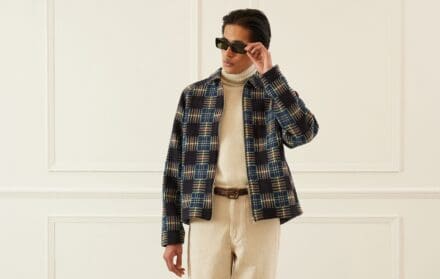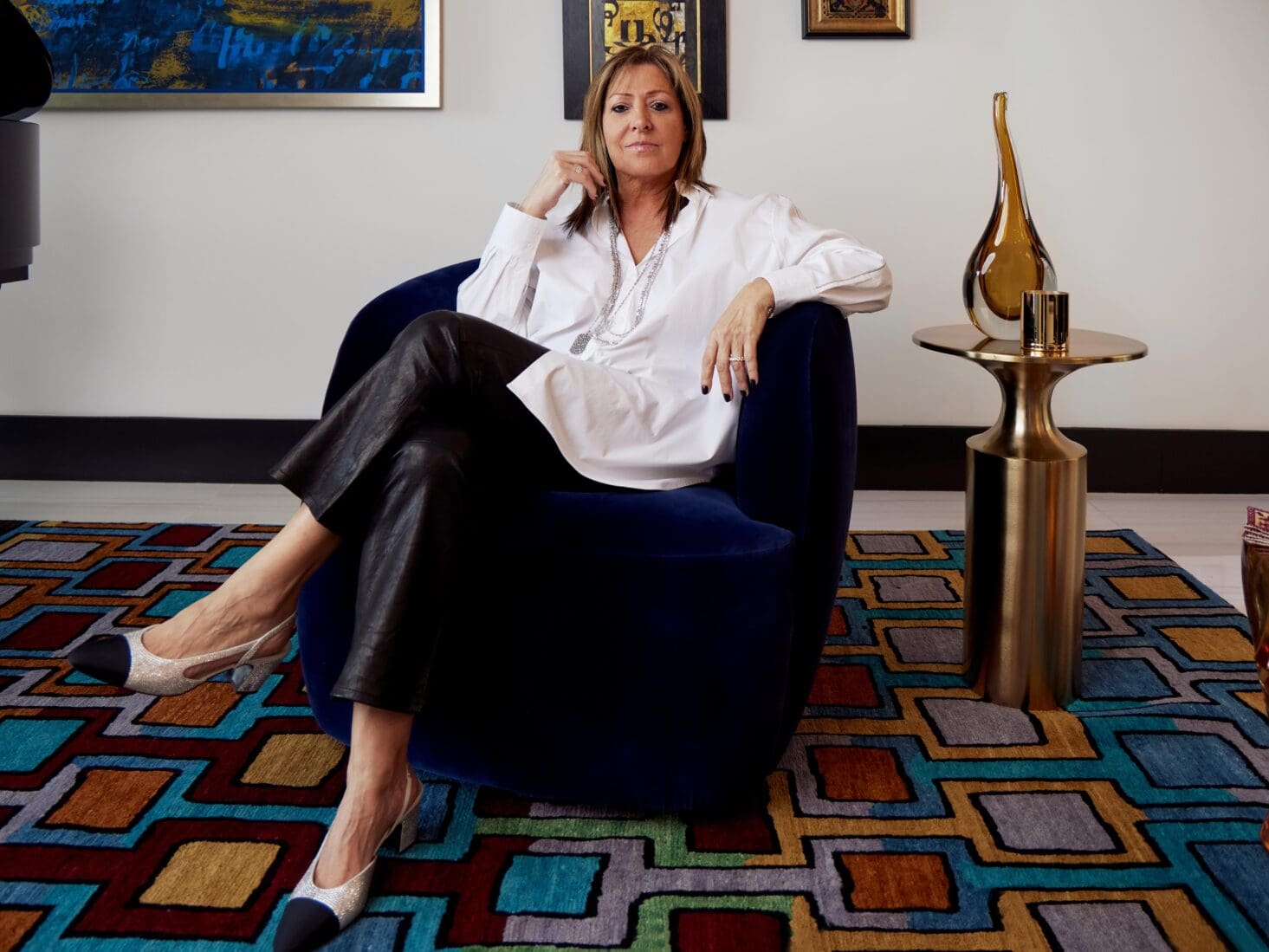
Women in Luxury: Suzanne Kalan, jewellery designer
The LA-based jeweller talks candidly about juggling business with motherhood – and how one of her first collections changed the industry forever
Suzanne Kalan is the epitome of a business trailblazer. Founding her eponymous brand in 1988, shortly after having a daughter, Kalan launched her first jewellery line from her dining room table, piecing together designs that moved away from the traditional. No stranger to breaking a glass ceiling or two, she recalls being in rooms with male jewellers, buyers and stockists who wouldn’t take her seriously, shrugging off her now-famous baguette diamond designs. These designs would eventually form the bestselling Fireworks collection that changed the game when it came to diamond jewellery.
What I learn from our conversation, however, is that, while she prides herself on being a successful businesswoman, her simultaneous life mission is to also be a good mother. As we chat over Zoom, her camera displaying the rolling urban sprawl of LA lit by an enviable blue sky behind her, Kalan talks openly about what an inspiration her own mother was – seamlessly shifting from a well-heeled housewife in Lebanon to a factory worker when the family moved to Canada and then to California – and how her work ethic was drilled into her from a young age, cutting her teeth at her father’s jewellery business for 10 years before branching out on her own.
With her husband, son and daughter now part of the business – her kids grew up doing their homework at the office while she worked into the evening – Kalan is grateful for the journey they’ve been able to go on as a family. However, when it came down to the one piece of advice she’d give her younger self, she couldn’t have answered quickly enough: “Spend more time with the kids. The business is always going to be there but the kids grow up quickly.”


It seems no matter how successful you are, that universal battle every working woman has if they want a career and a family never seems to go away. In that spirit, Kalan shifted her business’s office hours so her team (who are predominantly women and mothers) can be there for the school pick-up and drop-off, and is overjoyed that her daughter, Patile, has joined her at the design table. “They come first, always,” she states.
Today, Kalan is one of the most celebrated designers in the fine jewellery industry, renowned for her use of colourful semi-precious stones and inventive approach towards diamonds. We sit down to discuss her career so far, working side-by-side with her family and why her 4am alarm is essential.
Definitely not a jewellery designer – this all happened by accident. For most of my school years, until I was in college, I wanted to be an interpreter or translator. I was born in Lebanon and when I went to school [we were learning] French, Arabic and Armenian. As we got a bit older, English was added. I enjoyed learning the languages and it was really my strong point.
When we moved to California, I ended up working for my father, who had a jewellery store. I was about 18 and had dropped out of college – I never finished which is one of my regrets – and he needed me full time. I was there from morning until 6pm in the evening, and I didn’t have enough time to go back to classes.
I worked for my dad for about 10 years and then I got married. After a year and a half I already had a baby and I was staying at home. I had been busy all my life and my daughter was amazing – sleeping all the time and such a good baby – so I needed to do something with my free time so I started making jewellery for myself, and then my sister, and then it started to get noticed. That’s how it all started, just by accident, and it turned into a business within six months of me starting to make jewellery.
I was already thinking about starting a business. Back then, 34 years ago, we didn’t have a lot of choices in things like activewear and beauty so I thought about branching into [them]. I had done a lot of research into opening stores but then the jewellery just happened and took over, so I got designing. I never thought about becoming a jewellery designer until it just happened.
When I started making my own pieces, I was buying beads, Swarovski crystals, brass, wiring – nothing fine. I started in fashion jewellery because I wanted to create something different; I was so tired of the plain, classic fine jewellery I had been selling for the past 10 years. I didn’t think we had fun pieces to wear as far as jewellery was concerned.
The challenges were making the jewellery – I didn’t know how to wire wrap beads or anything, so my father-in-law taught me as he was in the jewellery business also. I didn’t know how to price either. My father sat down with me and we worked on how to price the materials, the labour, the profit margin, taxes, but he had already taught me from a very young age how to balance a cheque book and keep invoices. The other challenge was finding the customers after I made my first collection. But it all worked out perfectly because there was a need for what we were doing back then.
The shape of the baguette diamond was the biggest inspiration. I’ve always loved baguettes, as they’re very edgy. I didn’t even think about coloured stones when we first started, I was just thinking about diamonds. This shape, however, really wasn’t used anywhere.
I had emptied this whole parcel of 15-20 carats of diamonds and I knew I had to come up with something to use baguettes. On the table, they looked fantastic scattered all over like fireworks and I wanted to make jewellery that looked like that.
I had a very hard time with the jewellers and setters to get my ideas across because everybody was used to everything [being] lined up, nothing was scattered or uneven. They weren’t all at the same level, as some stones would be high and some would be low, and that’s not the typical way of setting jewellery but that’s what makes it so interesting to look at.
Male jewellers had a negative idea of baguettes because they’re so specific in size and shape that they weren’t as easy as round diamonds – but women buyers loved it. It was the fashion industry that really helped us put our styles on the map – such as Net-A-Porter and Harrods – and then the fine jewellery [sector] picked it up.
It’s completely different to what it was 10 years ago. Back then, I would be in the office at 7am and leave at 6pm as I would be doing everything. I have great help now so I feel comfortable. I get up very early, I’ve been up since 4am: I go through my emails, read a bit, and relax. I like my mornings because no one asks me for anything. I look at all the websites we work with, do some shopping and get to work at 9.30am. Once I get to work, it’s non-stop. I don’t take personal phone calls and I don’t do any personal admin during work time. I like to be a good example to my team and I’m friendly with everybody in the office. We’re like a big family.
Our days start at 8am and finish at 4.30pm, and this happened because I had a huge team of 30 female employees about 20 years ago and [I noticed] every mother would come in around 8am and sit outside and wait for us to open at 9am and they’d have to put their kids in afterschool programmes because they left later. We then changed the times to help mums.
The best part is the design and working with our customers, getting the reactions and seeing them wear the jewellery. I often go to client appointments in Harrods when I’m in London so I can meet them, see them and work with them. It really makes me understand what I should be doing. The worst part is the paperwork – the financial portion isn’t even something I want to think about.

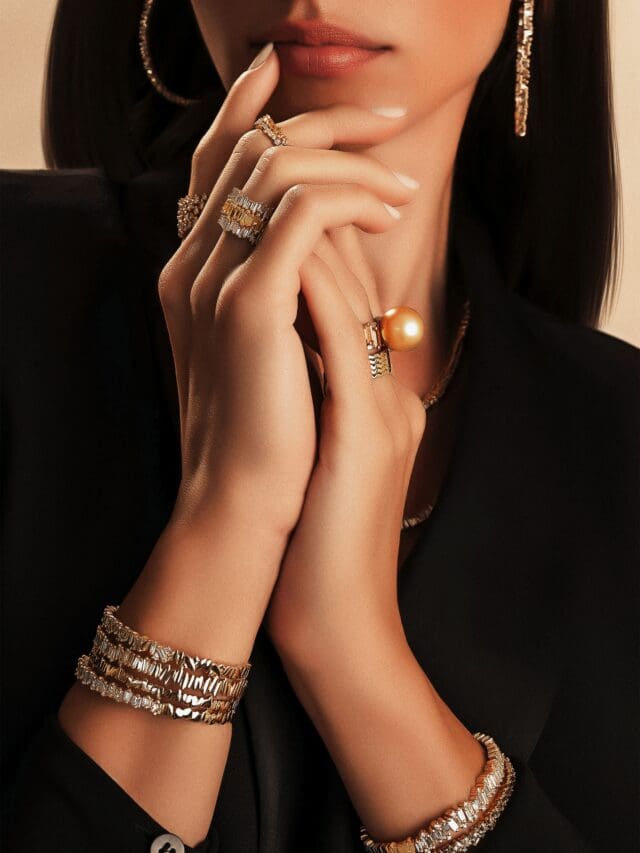
Changing the industry as far as baguettes are concerned – I think that’s the biggest highlight for me. The reaction I’ve got from diamond dealers [is amazing] and now I see baguettes in everything, from shoe buckles to sunglasses.
There’s always ups and downs in the business. We’re not a huge company and we don’t have investors as we’re family owned. What makes a big difference in our business is the copies that are being made and sold. I once spoke to a retailer selling copies and asked him why he was doing this and he said: “Of course I’m going to sell copies – Cartier, Van Cleef and you.” That is upsetting, but if you look at it with another point of view, if we’re being copied that much, that means we’re doing something right.
I try very hard. My husband works with me as head of production and mainly handles the financials, my son [Kami] is head of our marketing, and my daughter [Patile] designs our 14-carat collection and also works with me. They all get upset with me when I don’t put my phone away. I’m the type of person who has to do it there and then to not think about it. My kids don’t want to talk about work outside of work, they are very good at switching off. I need to make appointments with them to talk about work.
[The early mornings] are when my husband and I discuss everything that’s going on in our lives. I’m trying more and more to switch off, and I think I’m doing a good job. I have two grandkids – two and three years old – and they live about an hour away so we bought a house near them, so that’s our weekend home. When we’re with them, there are definitely no work calls being answered. I don’t want to miss out with them.
I normally come four times a year. I usually stay at The Langham – I’ve stayed there for so many years it’s like home. I love visiting Harrods, Selfridges and New Bond Street, and always go there a few times during my trip. There’s so many restaurants to choose from but I enjoyed Amazonico. It was fun and you don’t get bored there.
The first person that comes to my mind is my mother. She was a housewife when I was younger and never worked in her life apart from taking care of her kids, cooking and sewing at home. Then we moved to Montreal and, financially, we were having a hard time. My mother went out and got a job at a clothing manufacturer. It was very hard for her to go from being a super comfortable woman to leaving really early in the morning in the cold of winter in Montreal. She was a perfect example to me that if you put your mind to it, you can make it.
I didn’t want my daughter or my son to be part of the business. I wanted them to go to school, to each have a different career and do what they really wanted to do. Both of them did go to school and did try other jobs and then both ended up with us. I used to be at work all the time and one of my regrets is not being able to spend time with my kids when they were younger. I don’t think I would have been satisfied just taking care of kids, but I see now that being with your family is a totally different feeling – spending the days with them, picking up on details and watching them grow. I didn’t do that. I would see them in the morning, and they started school early, and then in the evening they were with nannies.
Since I was at work all the time, [Patile] would finish school and I would pick her up and bring her back to the office. She would do her homework and after that helped with work. My daughter started very, very young in the office and at the bottom, doing everything she needed to do to get to the top, from packing to handwriting labels. She has gone through every step to get to where she is.

Suzanne Kalan with her daughter Patile
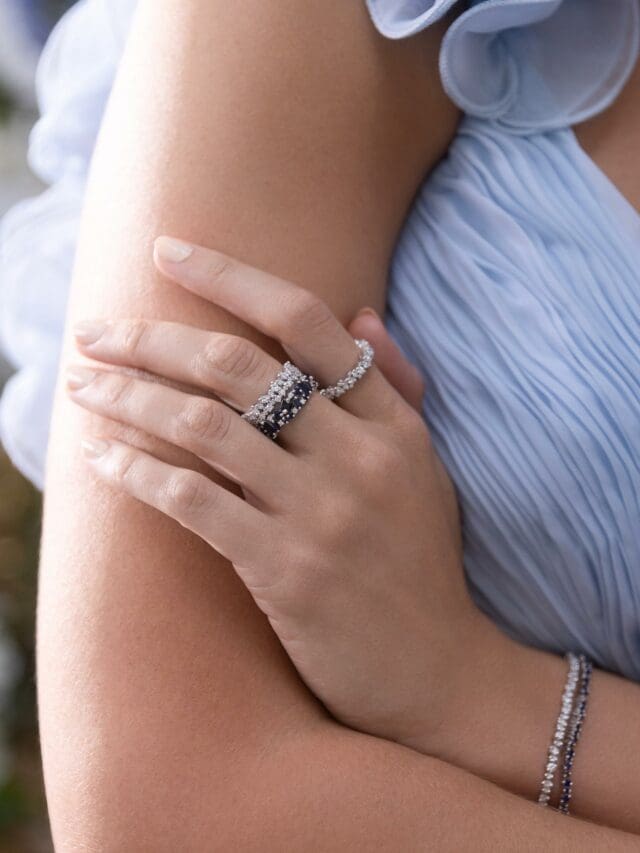
A younger vision and looking at things differently. Even mentally, she will turn off when she’s not at work and that’s completely different [to me] and I really appreciate that. I [admire] how the younger generation think about life; I think the older generation is much more involved and hands-on with everything, while younger people, from what I’m seeing, look at enjoying life as important as working. Back in my day, my father used to tell me how I needed to work hard and that’s what I used to do – work, work, work.
Being fair and understanding, but also being strong and setting a good example. I’m very firm but I’m also fair, and I think that makes a difference.
There’s been a huge difference since I started. Most women didn’t buy jewellery for themselves and if they did the highest price point would be $500-600. Years later, it was $1,500 and now it’s unlimited – women do exactly what they want.
As far as running a business, it was always a man who was the president and then the women were the employees. It’s totally [different] now.
[I hope] men will be a bit more open-minded. My husband definitely isn’t [old-fashioned] and that’s how we got to where we are. He’s completely accepting, was the one who pushed me to do what I wanted and has stood behind me 100 per cent of the way – and that’s how we succeeded. I would like everyone to think that way.
Women can do almost anything, but it’s a lot more difficult to start a business these days as there’s so much competition – and it doesn’t matter if you’re a woman or a man. I think it was easier to [start a business during my time] and it’s not only about design, you have to know how to run a business and be financially capable to last up to three years in the beginning.
Having kids and getting married – it’s still the same situation for working women years ago. It doesn’t matter how much great help you have – and I did – but not being able to spend time with them, while trying to do the best for your business and family is really hard.
Be prepared because luxury is a tough business – and luxury fashion is even tougher. It’s beautiful, creative and makes you feel good but it’s not an easy industry and it changes everyday. You need to be on your toes constantly.
If you’re going to start your own business, you need to know how to run it. It’s not just how great you are at design; you also need to know how to sell, how to buy, how to balance your cheque book and make sure the funds are there alongside making beautiful designs.
Visit suzannekalan.com
Read more: The best new watches for women in 2024
